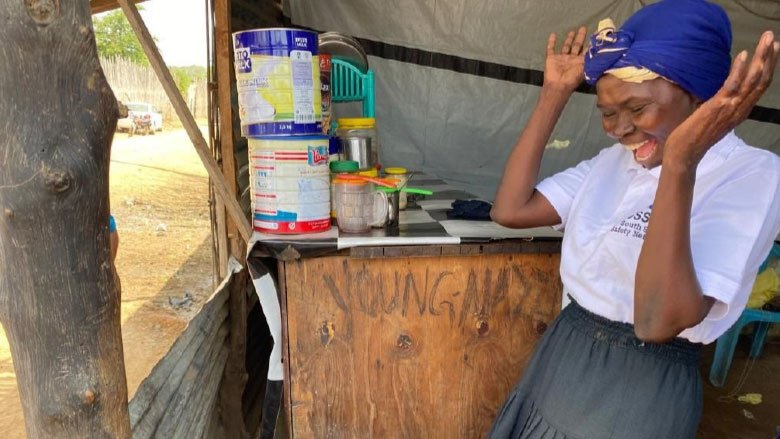Challenge
According to a new World Bank Systematic Country Diagnostic update (SCD), South Sudan has remained one of the world's poorest and most fragile countries since it attained independence in 2011, with worsening human development indicators from repeated cycles of conflict, violence, disasters, displacement, and trauma, especially among women and girls. Gender-based violence (GBV) has been a continual problem. The Human Capital Index ranks the country 156 out of 157 countries; poverty climbed from 66 percent in 2015 to 89.6 percent in 2019. About 6.6 million people are facing high levels of acute food insecurity, making South Sudan one of the world's most food-insecure nations. South Sudan's humanitarian safety net was short-term and unpredictable, and limited institutional capacity hindered the government’s ability to offer long-term income and livelihood opportunities to vulnerable households.
Approach
The South Sudan Safety Net Project (SSSNP), implemented between 2020 and 2023, aimed to bolster the resilience and livelihoods of vulnerable households by providing cash transfers through labor-intensive public works (LIPW) and direct income support. The project provided a blueprint for more efficient and effective benefit distribution through improving beneficiary outreach, harmonized with the needs of the local communities. Within a relatively short timeframe of three years, SSSNP delivered significant results, employing existing institutions of local governance and flexible community-based beneficiary targeting, strengthening women’s inclusion and GBV prevention, and putting in place a digitized Management Information System (MIS). LIPW encouraged community infrastructure and agricultural services, providing livelihoods for recipient households. A” Cash Plus” approach, which complemented cash transfers to also enhance beneficiaries’ knowledge on financial literacy, early childhood development and water, sanitation and hygiene (WASH) improved cash transfer efficiency and household wellbeing.
Results
Between April 2020 and March 2023, the project achieved the following results:
- Promoted welfare and resilience of vulnerable households: The project successfully provided a total of $23.486 million to 65,045 households, comprising 423,051 people, 52 percent of whom were female. Through the cash transfers, the project improved 95 percent of households’ standard of living; enabled over 77 percent of households to purchase assets, essential goods, and services; increased household savings by 26 percentage points; increased human capital expenditures on education (in 85 percent of households) and health (77 percent); and delivered 378 sub-projects based on community priorities. Sub-projects focused on small-scale food production yielded 1,300 tons of agricultural produce.
- Bolstered safety net delivery tools: For more efficient service delivery, the project enabled use of the integrated Biometric Management Information System (MIS) for beneficiary registration, enrollment, and authentication for 100 percent of payments (exceeding its projected goal of 80 percent). To facilitate transparent and speedy responses to any concerns, the project also digitized its Grievance Redress Mechanism (GRM), with 100 percent of grievances resolved through the MIS. Geographic Information System-enabled and mobile-based real-time remote data tracking tools ensured efficiency in monitoring, accountability and transparency. The strengthened delivery tools were handed over to and managed by the government.
- Gender empowerment, social inclusion and GBV risk mitigation: The project promoted gender equality and exceeded its gender-specific targets; 77 percent female participation in labor-intensive public works exceeds the 60 percent target, and GBV-specific risk mitigation was delivered through sensitization, capacity building, and deployment of GBV focal persons.
- Pioneered innovations and good practices in use of safety nets: The project forged community engagement and capacity building to enable community cohesion, decision-making, and peacebuilding; integrated cash-plus approaches; and improved nutrition, saving, and hygiene practices. A behavioral-nudge intervention to encourage beneficiaries’ priority setting, planning, and allocating cash to support long-term goals increased spending on priority items, such as food and medicine, by 6 percent and reduced food insecurity by 3 percent among pilot participants.
- Institutionalized local governance structures: The project mobilized and raised awareness among project oversight committees. Including a representative for local community members on these committees enabled local governance mechanisms to function for greater engagement and accountability. For instance, Appeals Committees at the Boma (village) level provided a community interface to resolve project-related complaints and grievances, enhancing social accountability.
Bank Group Contribution
The SSSNP was financed by an International Development Association (IDA) grant of $40 million.
Partners
The United Nations Office for Project Services (UNOPS) was the main implementing agency of the project, while the Ministry of Agriculture and Food Security and Ministry of Gender, Child and Social Welfare provided strategic guidance throughout project implementation. Furthermore, the project sought close partnerships with key partners in the social protection sector in South Sudan, including the World Food Programme (WFP) and United Nations Children’s Fund (UNICEF). Collaboration with WFP, which included joint sensitization and beneficiary de-duplication exercises in some geographical locations, led to deepening synergies between SSSNP and WFP-implemented safety net programs.
Looking Ahead
The successful implementation of SSSNP paved the way for the subsequent Productive Safety Net for Socio economic Opportunities Project (SNSOP), a $129 million IDA-financed project, which provides safety net assistance to vulnerable households and strengthens the government’s safety net delivery system. Based on the results and lessons from SSSNP, SNSOP will scale up safety net assistance to 96,000 households, spanning the 10 counties that were originally targeted. It will also add five newly targeted counties, while enhancing complementary social measures aimed at human capital development and introducing economic inclusion interventions targeting youth. The project also shifted from third-party implementation to a government-led implementation modality, further enhancing the government-led safety net system.
